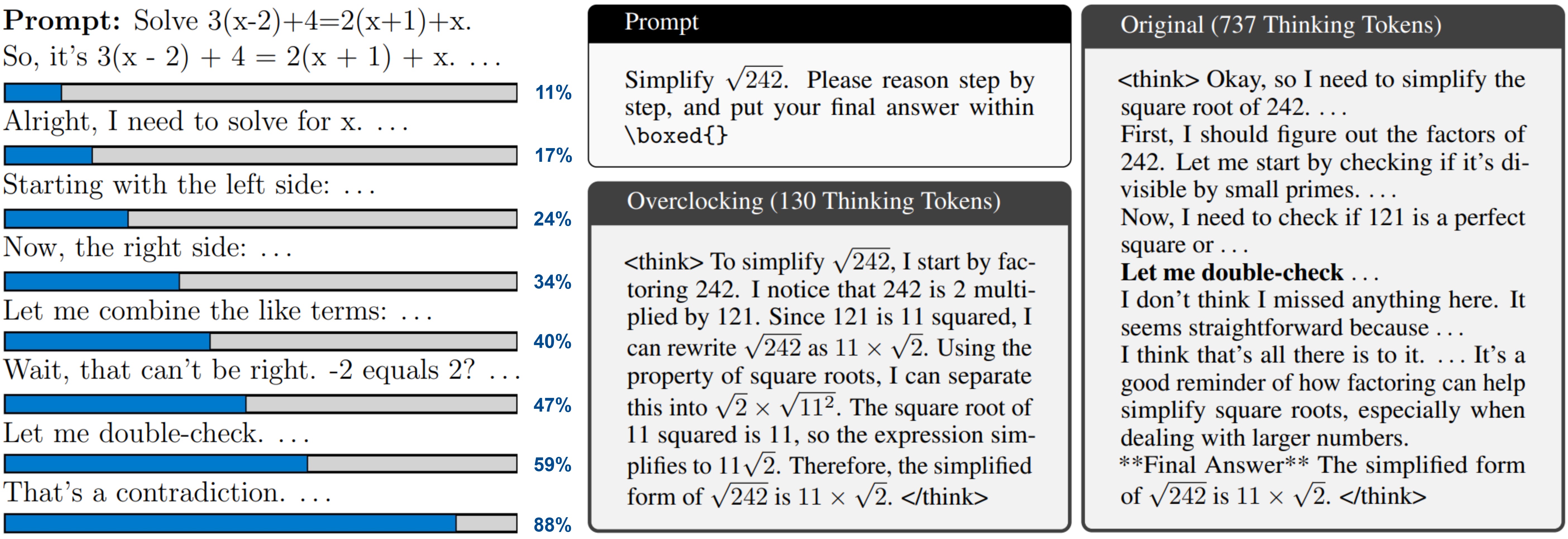Abstract
Recently, techniques such as explicit structured reasoning have demonstrated strong test-time scaling behavior by enforcing a separation between the model's internal "thinking" process and the final response. A key factor influencing answer quality in this setting is the length of the thinking stage. When the reasoning is too short, the model may fail to capture the complexity of the task. Conversely, when it is too long, the model may overthink, leading to unnecessary computation and degraded performance. This paper explores and exploits the underlying mechanisms by which LLMs understand and regulate the length of their reasoning during explicit thought processes. First, we show that LLMs encode their progress through the reasoning process and introduce an interactive progress bar visualization, which is then used to reveal insights on the model's planning dynamics. Second, we manipulate the internal progress encoding during inference to reduce unnecessary steps and generate a more concise and decisive chain of thoughts. Our empirical results demonstrate that this "overclocking" method mitigates overthinking, improves answer accuracy, and reduces inference latency.
